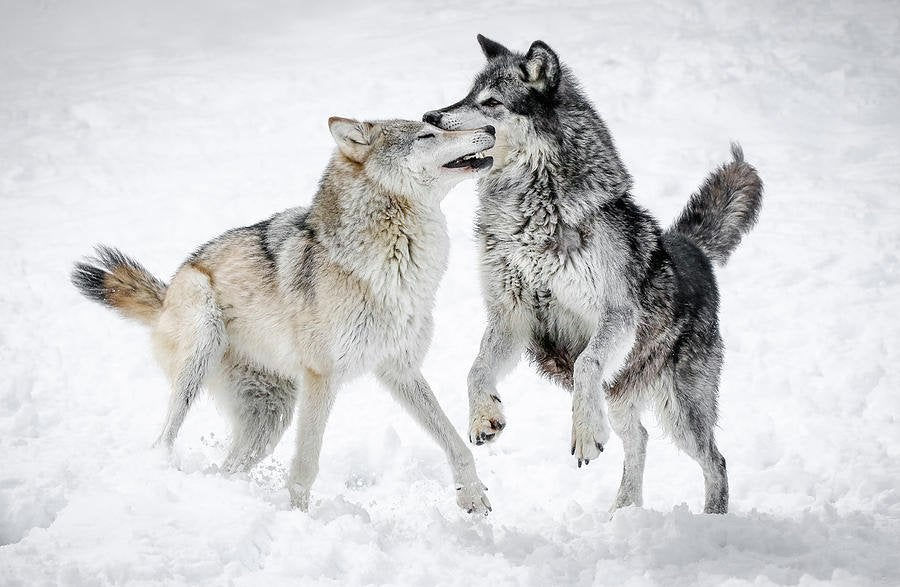Playing with the Database
- pearlsc
- Apr 25, 2021
- 2 min read
ARTICLE 1 "In wolves, play behaviour reflects the partners' affiliative and dominance relationship."
Works Cited
Cafazzo, Simona, et al. “In Wolves, Play Behaviour Reflects the Partners’ Affiliative and Dominance Relationship.” Animal Behaviour, vol. 141, July 2018, pp. 137–150. EBSCOhost, doi:10.1016/j.anbehav.2018.04.017. Link
For this article, I used the keywords "wolf behavior" or "wolf social" to look for anything that had to do with the social dynamics in wolves and what built them and how they were built (whether its how they communicate, how they interact, etc.). In this article, researchers observed two packs: one of only puppies and the other made up of a mix of puppies and adults. These observations were categorized based on what kind of play was shown (relaxed vs competitive) and how the types of plays and the frequency and duration of these plays influence the individual relationships. The writers concluded that more time spent in relaxed and competitive play led to less aggression outside of play and that individuals who spent more time in competitive play led to more aggressive behavior. This study actually provides a quantitative method of categorizing the wolves' behaviors and sheds light on how dominance relationships develop or change.

ARTICLE 2
"Social play in captive wolves (Canis lupus): not only an immature affair."
Works Cited
Cordoni, Giada. “Social Play in Captive Wolves (Canis Lupus): Not Only an Immature Affair.” Behaviour, vol. 146, no. 10, Oct. 2009, pp. 1363–1385. EBSCOhost, doi:10.1163/156853909X427722.
For this article as well, I used the keywords "wolf behavior" and "wolf social" to find it and other articles of similar subject. In this research article, the writers looked into how social play affects relationship quality and overall aggression. Contrast to the first article, this one also takes into account of how social play is used among adult wolves specifically to see how it expands beyond the juvenile stages. This study's conclusions include that often these behaviors lead to strengthened bonds and reduced conflicts among members. It also mentions of a negative correlation between rank distance and play distribution, elaborating that those close in ranks used playing as a test to gain an overview of a competitor's abilities and to assess the hierarchical advantages from this. This study almost serves a step up from the first article and further provides observations of how social play is still used and adapted further in adult wolves and their social affairs.
My Conclusions From Wandering the Databases
A combination of the first and second article shows a progression and development of how social play is employed in wolf social dynamics. They break the image of wolf social units being strictly alphas and violent prowess but actually something more fluid, cooperative, and even strategic. Looking about the databases was not so tedious but quite surprising! I will say though that there's a need to see something beyond the data and to be able to grasp inferences and implications that come from the observations the researchers had. I've realized that this quality is what will make or break what I will write!
An untainted wolf meme for your troubles, weary traveler of the internet ~




Pearl! I found that the research articles you found were very informative. I was especially surprised with how much social environments contributed to wolf behaviors. This would make sense since they are rather social animals. It really comes to show that learned behaviors are largely a result of an individual's environment.
Heya Pearl! This is my first time visiting your page and I was blown away by how organized and professional it was! I'm a big fan of wolves and I can't wait to read what you write about them. Your tone is both professional and entertaining, a great combination if you ask me. Good luck on your project!
Hi, Pearl!
Your blog posts are very well-written and interesting to read; you have a great sense audience engagement! The first article seems like a perfect source to use in your Literature Review because it provides quantitative data the will provide your paper with factual evidence. In turn, the second article could be cited in your Advocacy Project as you address an issue related to the social development of wolves. Good luck on your assignment! So far you have the tools to write great papers!